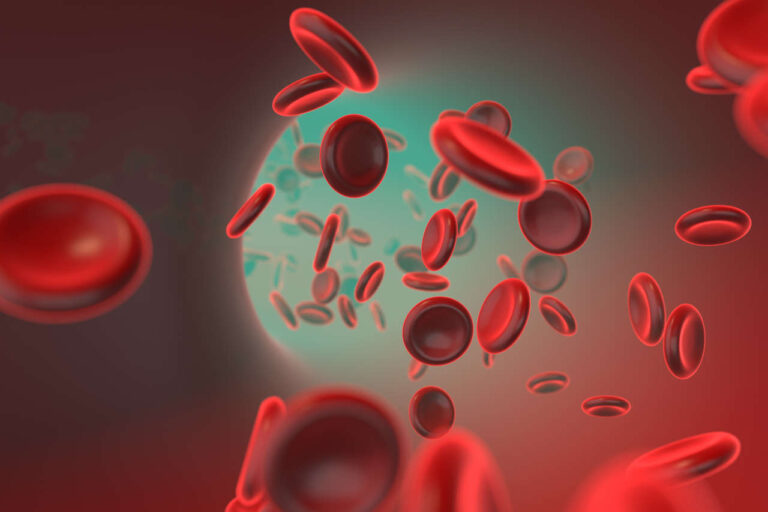
IVIG for acute disseminated encephalomyelitis (ADEM) is an effective second-line treatment when corticosteroids fall short, or patients cannot take them due to some medical conditions.
Ask About IVIG Home Infusion
A Quick Overview of Acute Disseminated Encephalomyelitis
Acute disseminated encephalomyelitis (ADEM) is a sudden and severe autoimmune disorder. It causes damage to the protective coating surrounding nerve fibers.
The process in which the immune system damages the coating is known as demyelination. In people with ADEM, demyelination occurs in the brain and spinal cord. Rarely, the optic nerves (carrying signals from the retina of the eyes to the brain) may be affected.
Demyelination typically occurs after a bacterial or viral infection. Children are more likely than adults to get this condition.
ADEM is a rare condition. The National Organization of Rare Disorders (NORD) estimates 0.07 to 0.09 new cases per 100,000 children [1]. The number of new cases in the general population is unknown.
Another name for this condition is post-infectious encephalomyelitis.
ADEM isn’t inherited, but genetic factors may make you more likely to get it.
How Is Acute Disseminated Encephalomyelitis Managed?
There’s no universally accepted treatment for ADEM, and the U.S. FDA hasn’t approved any specific therapy to treat it.
Your healthcare provider will typically start with high-dose intravenous corticosteroids and supportive care. Corticosteroids (the first-line treatment) can help reduce inflammation of the brain and spinal cord.
Supportive care can include [2]:
- Measures to manage airway (some patients may need a machine to breathe)
- Antibiotics to help fight infections
- Antiseizure medications
- Maintenance of fluid and electrolyte balance
- Medications to prevent blood clots in the leg
When corticosteroids don’t work as desired, your healthcare provider will treat you with either plasma exchange (plasmapheresis) or IVIG.
IVIG for Acute Disseminated Encephalomyelitis: How Does It Work?
The exact mechanism is unknown. Health experts believe that IVIG may work in ADEM by:
- Decreasing the production of proteins (immunoglobulins or antibodies) that damage the brain and spinal cord
- Accelerating the breakdown of immunoglobulins
- Preventing the immune system from forming harmful immune complexes (the binding of antibodies with disease-causing particles)
Get Financial Assistance for IVIG
When Should You Get IVIG for Acute Disseminated Encephalomyelitis?
IVIG isn’t the primary treatment for ADEM and may only be considered under certain conditions:
- When intravenous corticosteroids fail to manage ADEM symptoms
- When some patients cannot tolerate high-dose corticosteroids due to certain medical conditions
- When corticosteroids might worsen the condition in ADEM patients who also have meningoencephalitis (inflammation of the brain and its coverings)
- When plasma exchange (a second-line treatment) doesn’t work
IVIG for Disseminated Encephalomyelitis: How Effective Is It?

Several case reports suggest IVIG can be an effective alternative to corticosteroids.
For example, in a 1995 case report, investigators described an 11-year-old boy with ADEM who responded within 24 hours to IVIG. The patient received 400 mg/kg IVIG daily for 5 days [3].
In addition, a 1999 study reported full recovery in two children (both younger than 10) who received 2 g/kg IVIG for 5 days [4].
Similarly, a 2019 case study reported a 30-year-old female who fully recovered after prompt treatment with high-dose corticosteroid and IVIG. The patient received 0.4 g/kg IVIG for 7 days [5].
According to the Australian National Blood Authority guidelines, which reviewed multiple case reports, second-line IVIG treatment can result in complete recovery in [6]:
- Children with monophasic ADEM (occurring once in a lifetime)
- Children with recurrent ADEM (more than one episode of the disease)
- Children with relapsing ADEM originally treated with IVIG within the previous six months
The Canadian guidelines recommend IVIG for acute disseminating encephalomyelitis when steroid therapy fails. The IVIG doses mentioned in the guidelines are as follows [7]:
- Induction: 2 g/kg adjusted body weight divided over 2 to 5 days
- Maintenance (for recurrent ADEM only): 0.4 to 2 g/kg adjusted body weight every 4 to 6 weeks
Combining Corticosteroids and IVIG
Only in severe cases, a healthcare provider may recommend the combination of corticosteroids and IVIG. However, it’s unclear if doing so has any added advantage.
There have also been reports of healthcare providers administering plasma exchange with high-dose corticosteroids in severe cases of ADEM.
Other Second-Line Treatments
Patients with severe or steroid-resistant ADEM may receive other second-line treatments like cyclophosphamide or rituximab.
Speak to a Specialist
About Copay AssistanceThe Challenges of Using IVIG for Acute Disseminating Encephalomyelitis
Despite promising results in initial small studies, several challenges still limit IVIG use for acute disseminating encephalomyelitis, including:
- A lack of large, controlled human trials
- Timing of therapy (whether to start IVIG immediately or wait for corticosteroids to fail)
- Dosing guidelines
While early findings suggest IVIG can enhance the pace of initial recovery, it’s unknown whether IVIG can affect the time to or extent of full recovery.
Other factors that can limit the use of IVIG for acute disseminating encephalomyelitis include the high cost of IVIG therapy and access to IVIG.
Plasma Exchange vs. IVIG for Acute Disseminating Encephalomyelitis
Both plasma exchange and IVIG are effective second-line treatments. Yet plasma exchange is often considered superior.
Plasma exchange may pose fewer risks and a reduced rate of complications. Additionally, it is oftentimes more cost-effective for the patient.
Frequently Asked Questions
How do you treat acute disseminated encephalomyelitis?
Several treatment options for acute disseminated encephalomyelitis are available. These include high-dose intravenous corticosteroids, IVIG, and plasma exchange.
What is the first-line treatment for ADEM?
High-dose intravenous corticosteroids are the first-line therapy for ADEM.
What is the protocol for ADEM treatment?
The standard protocol of corticosteroid treatment for ADEM is intravenous methylprednisolone at 20 – 30 mg/kg/day (maximum 1 g/day) for 3 to 5 days, followed by tapering (gradually lowering the dosage) with oral prednisone for 4 to 6 weeks.
REFERENCES:
- “Acute Disseminated Encephalomyelitis.” NORD (National Organization for Rare Disorders), rarediseases.org/rare-diseases/acute-disseminated-encephalomyelitis/.
- Alexander, M, and J M K Murthy. “Acute disseminated encephalomyelitis: Treatment guidelines.” Annals of Indian Academy of Neurology vol. 14,Suppl 1 (2011): S60-4. doi:10.4103/0972-2327.83095
- Kleiman, M, and P Brunquell. “Acute disseminated encephalomyelitis: response to intravenous immunoglobulin.” Journal of child neurology vol. 10,6 (1995): 481-3. doi:10.1177/088307389501000612
- Assa, A et al. “Demyelinative brainstem encephalitis responsive to intravenous immunoglobulin therapy.” Pediatrics vol. 104,2 Pt 1 (1999): 301-3. doi:10.1542/peds.104.2.301
- Repić-Buličić, Ana et al. “SUCCESSFUL TREATMENT OF ACUTE DISSEMINATED ENCEPHALOMYELITIS (ADEM) BY PROMPT USAGE OF IMMUNOGLOBULINS – CASE REPORT AND REVIEW OF THE LITERATURE.” Acta clinica Croatica vol. 58,1 (2019): 173-179. doi:10.20471/acc.2019.58.01.22
- Ig Governance – Criteria for the clinical use of immunoglobulin in Australia. (n.d.). https://www.criteria.blood.gov.au/MedicalCondition/View/2611#
- Prairie Collaborative Immune Globulin Utilization Management Framework Project, et al. “Criteria for the Clinical Use of Immune Globulin.” Criteria for the Clinical Use of Immune Globulin, Second Edition, Alberta Ministry of Health, Shared Health Manitoba, and Saskatchewan Ministry of Health, Jan. 2022, www.ihe.ca/public/uploaded/Prairie%20Ig%20Final%20Guideline%2009.02.22.pdf.













